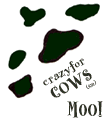|
|
|
|
|
|
|
Buttermilk and Sour Cream:
Buttermilk was originally the fluid left over after churning cream to make butter.
- It used to be consumed most often as a drink, but today it is usually condensed and dried for use in
the baking and frozen desserts industries.
- The beverage that is today called buttermilk is actually cultured buttermilk.
- This drink is made from skim or low-fat milk by adding bacteria that produce lactic acid.
- The milk is pasteurized first to kill harmful bacteria.
- After the milk is cooled somewhat, good bacteria, such as Streptococcus lactis,
Streptococcus cremoris, Leuconostoc citrovorum, and Leuconostoc dextranicum,
are added.
- The fermentation produced by these bacteria produce a thicker liquid than the original buttermilk,
but the cultured buttermilk is similar to the original in other respects.
- It takes about 12 - 14 hours to produce a curd. The curd is broken up by stirring.
- Next the product is cooled to about 45 degrees Fahrenheit to stop the fermentation. It is
then packaged and refrigerated.
- Cultured buttermilk made from skim milk contains mostly water (about 90%), the milk sugar
lactose (about 5%), and the protein casein (about 3%).
- Buttermilk made from low-fat milk has about 2% fat (butterfat).
- In both skim and low-fat buttermilk, some of the lactose is turned into lactic acid by the bacteria.
- This conversion makes the buttermilk taste slightly sour, but it also makes it easier for
lactose intolerant people to digest it.
- Sour cream is made using the same temperatures and culture methods as those for cultured buttermilk.
- The primary difference is that sour cream is made from light cream (with 18% fat) rather than
milk.
Source: Encyclopedia Brittanica online at "http://www.brittanica.com,
entries Buttermilk, and Dairy Product, production.
|
|



